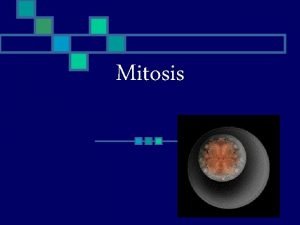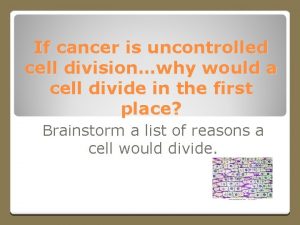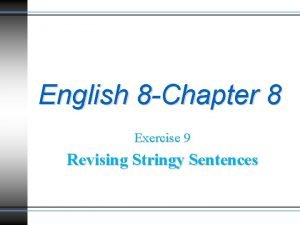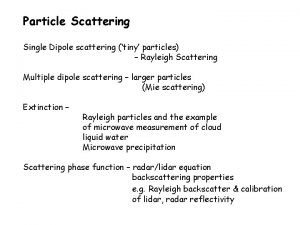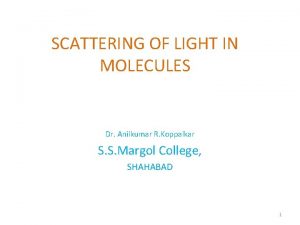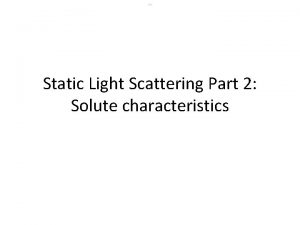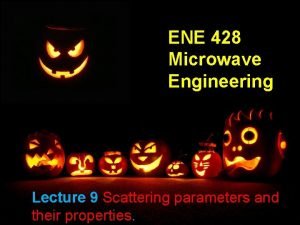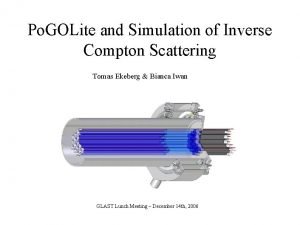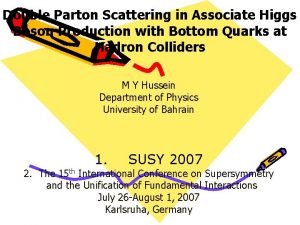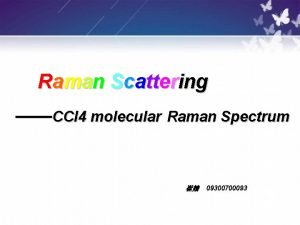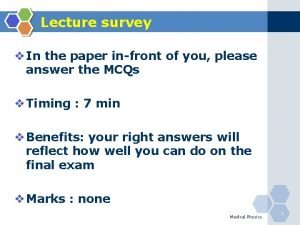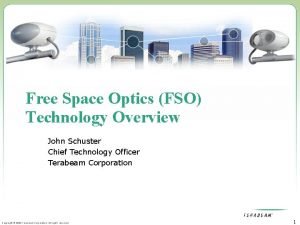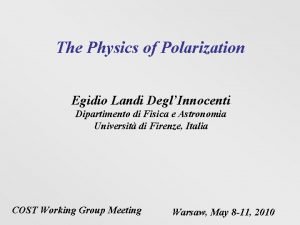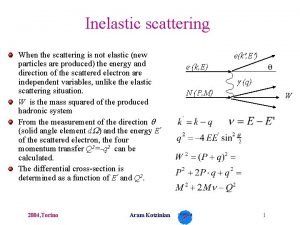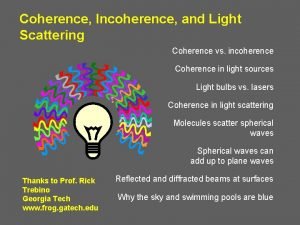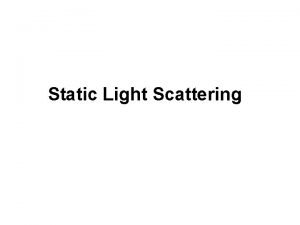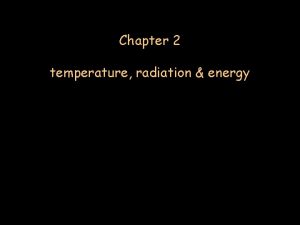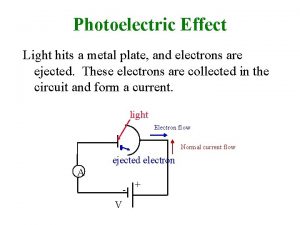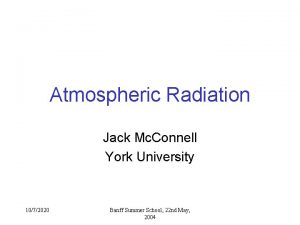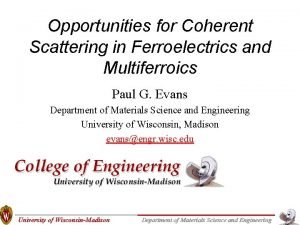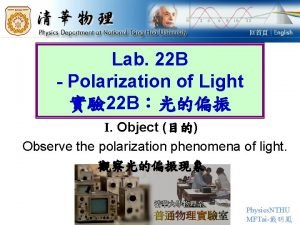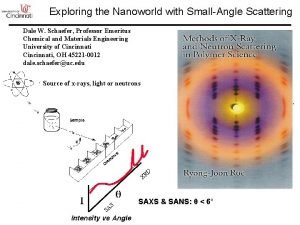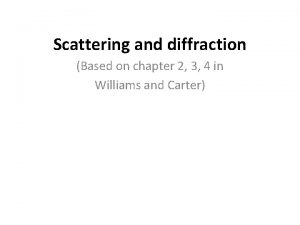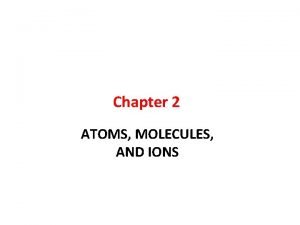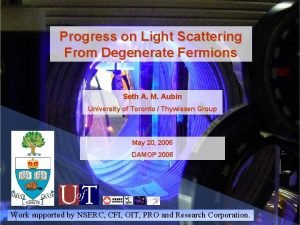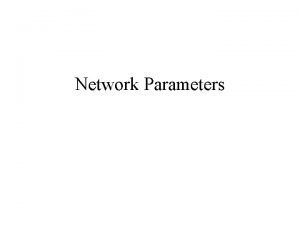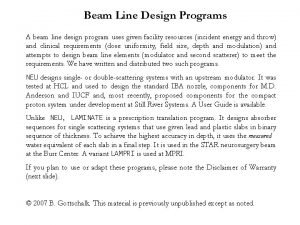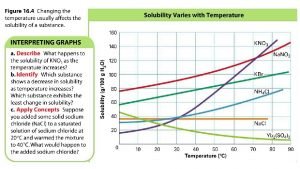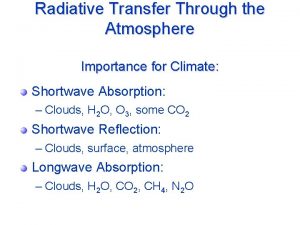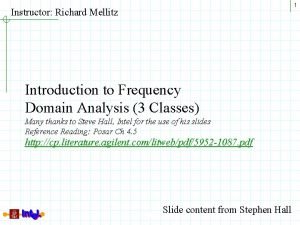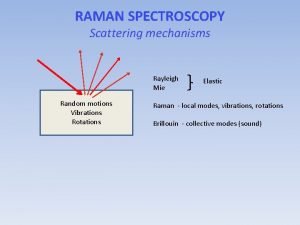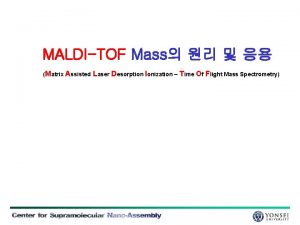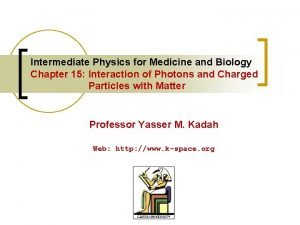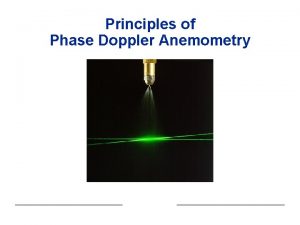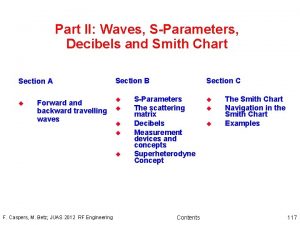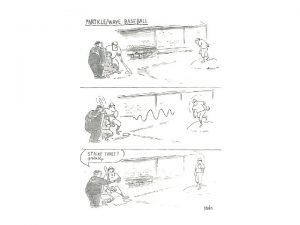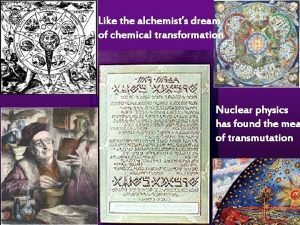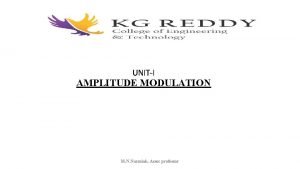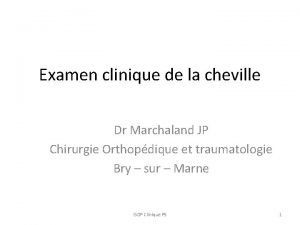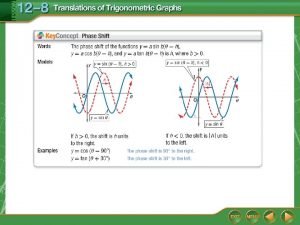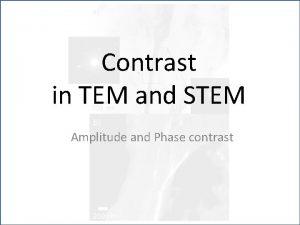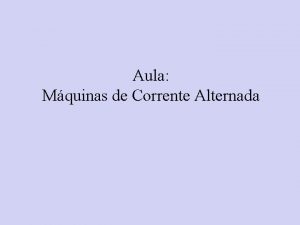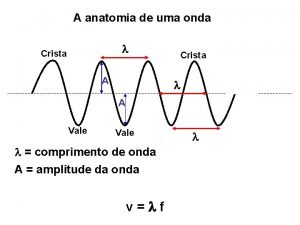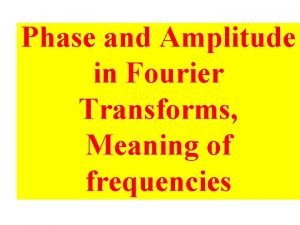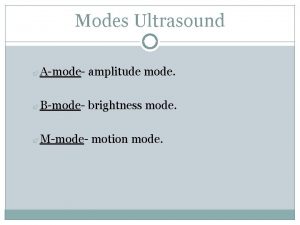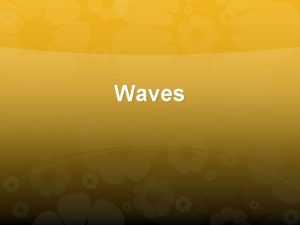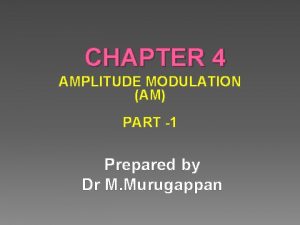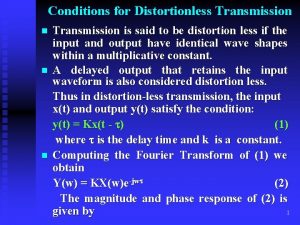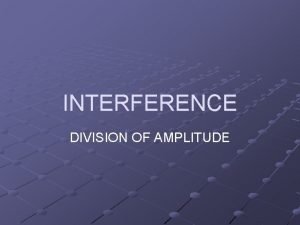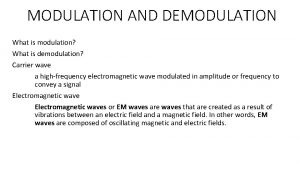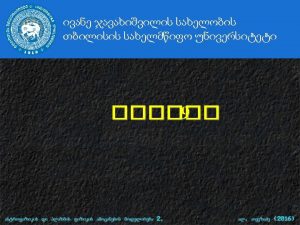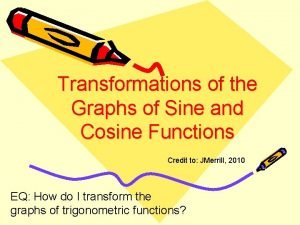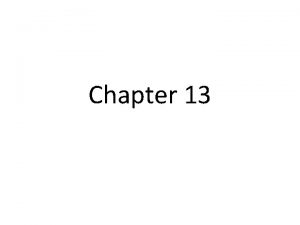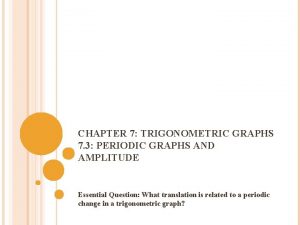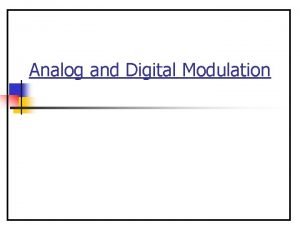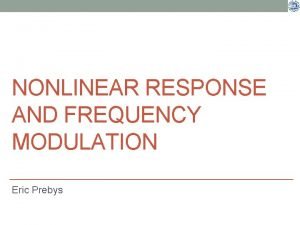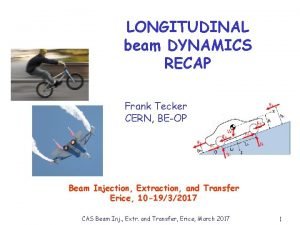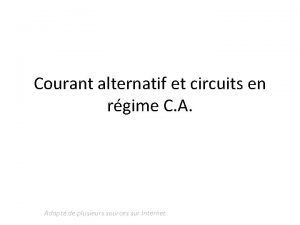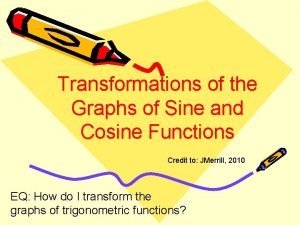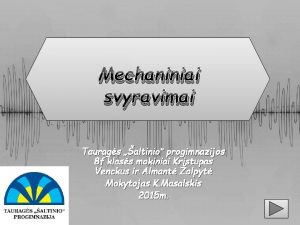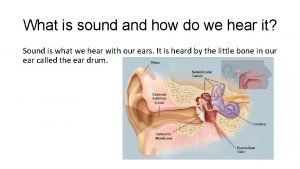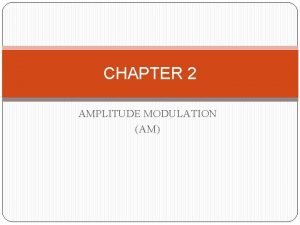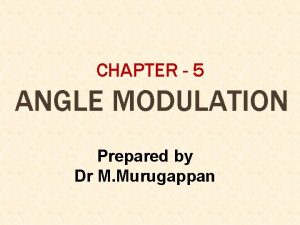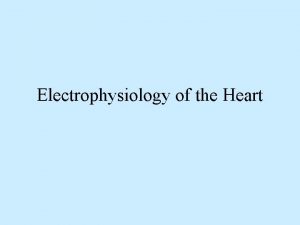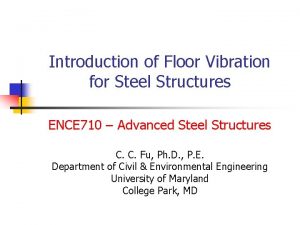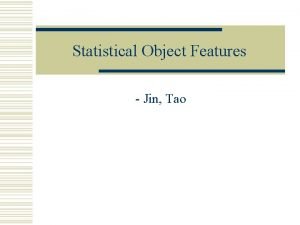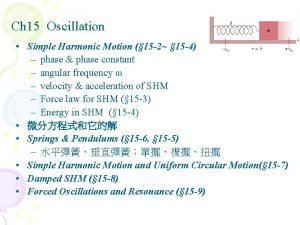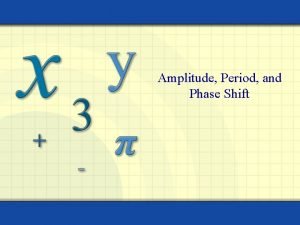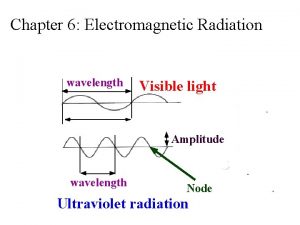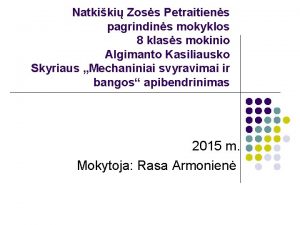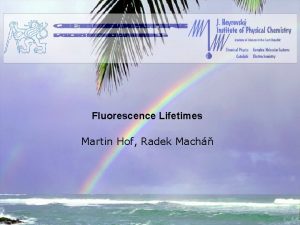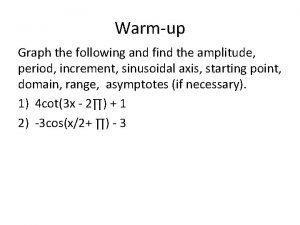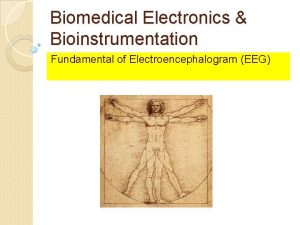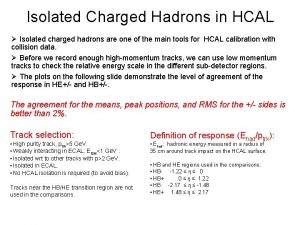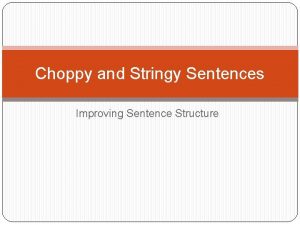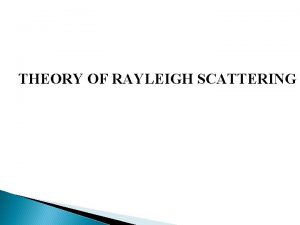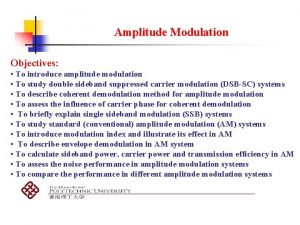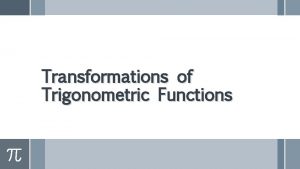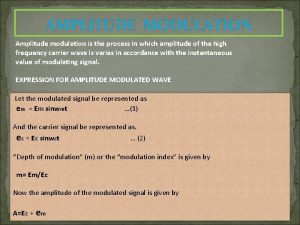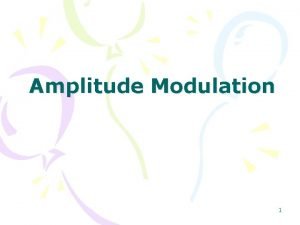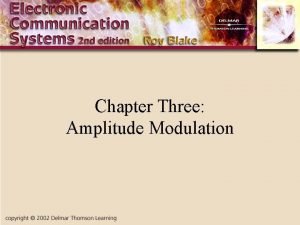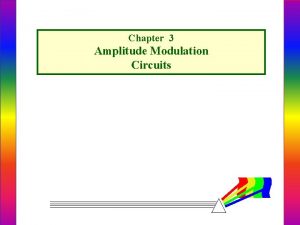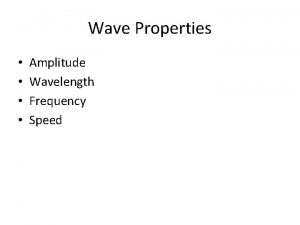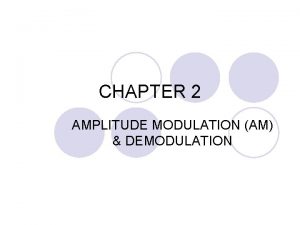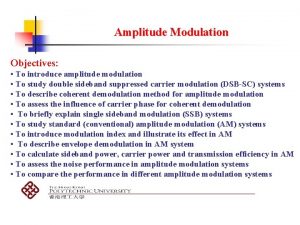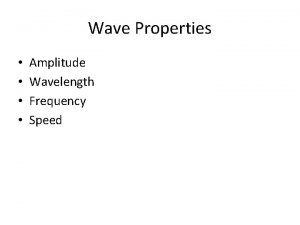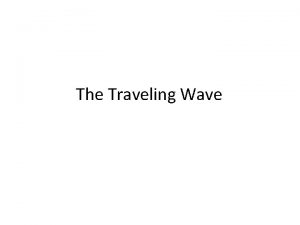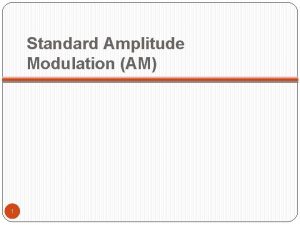The scattering amplitude of stringy hadrons with charged




























































































- Slides: 92

The scattering amplitude of stringy hadrons with charged endpoints. : - with Dorin Weissman Shimon Yankielowicz Nordita July 2019

Motivation The spectrum and decay width of hadrons admit a clear stringy behavior. Are the scattering processes like the p p collisions at the LHC related to scattering of strings? What is the corresponding scattering amplitude? Can we identify electro-magnetic properties of hadrons that have a stringy nature The stringy hadron carries electric charge on its ends. It is well known that such a system admits non-commutative geometry. What is the structure of this geometry for hadrons and can we suggest experiments to measure it

Stringy holographic Hadrons

(1) The rotating holographic string meson The holographic meson is a string connected to flavor branes The string is the classical solution of the Nambu. Goto action defined in confining holographic background

Example: The B meson

(2) Stringy Baryons How do we identify a baryon in holography ? Since a quark corresponds to an end of a string, the baryon has to be a structure with Nc strings connected to it. The proposed baryonic vertex in holographic background is is a wrapped Dp brane over a p cycle Because of the RR flux in the background the wrapped brane has to be connected to Nc strings

Dynamical baryon – Nc strings connecting the baryonic vertex and flavor branes boundary Flavor brane Wrapped D brane dynami

A possible baryon layout A possible dynamical baryon - Nc strings connected in a symmetric way to the flavor brane and to the baryonic vertex which is also on the flavor brane. boundary Flavor brane Baryonic vertex

Nc-1 quarks around the Baryonic vertex An asymmetric possible layout is that of one quark connected with a string to the baryonic vertex to which the rest of the Nc-1 quarks are attached.

(3) Glueballs as closed strings Mesons are open strings connected to flavor branes. Baryons are Nc open strings connected to a baryonic vertex on one side and to a flavor brane on the other one. What are glue balls? Since they do not incorporate quarks it is natural to assume that they are rotating closed strings Angular momentum associates with rotation of folded closed strings

Hadrons of the (HISH) Holographic Inspired stringy model

HISH- Holography Inspired Stringy Hadron The construction of the HISH model is based on the following steps. (i) Analyzing classical string configurations in confining holographic string models that correspond to hadrons. (ii) Performing a transition from the holographic regime (for fields) of large Nc and large l to the real world that bypasses expansions in (iii) Proposing a model of stringy hadrons in flat four dimensions with massive endpoint particles that is inspired by the corresponding holographic model (iv)Dressing the endpoint particles with structure like baryonic vertex, charge, spin etc (v) Confronting the outcome of the models with experimental data.

The HISH map of a stringy hadron The basic idea is to approximate the classical holographic spinning string by a string in flat space time with massive endpoints. The masses are and

String end-point mass We define the string end-point quark mass The boundary equation of motion is This simply means that the tension is balanced by the ( relativistic) centrifugal force.

Holographic mesons and glueballs and their map

(ii) The HISH Baryons

Fitted trajectories of mesons

Fitted trajectories of mesons

Fitted trajectories of mesons

Fitted trajectories of mesons

Toward a universal model The fit results for several trajectories simultaneously. The trajectories of We take the string endpoint masses in Me. V Only the intercept was allowed to change. We got

Fitted trajectories of mesons

Fitted trajectories of mesons

Trajectories of and

Trajectories of

Trajectories of and

Fit results: the total decay width of mesons Fits of the decay width of Mesons

Outline Motivation Brief review of the HISH model and its fits Charged stringy hadrons Actions, equations of motion and boundary conditions Symmetries and conserved currents and charges The general mode expansion Classical solutions: (i) Folded rotating string in a magnetic field (ii) Stretched string in electrin field. Canonical quantization and non-commutative geometry The OPE The energy momentum tensor and the vertex operator Scattering amplitude and experimental implitcations The non-critical string

Charged stringy hadrons in holography and HISH Mesonic strings in holography and HISH Baryonic strings

Charged stringy hadrons in holography and HISH It is important to emphasize the differences between the hadronic strings and the ordinary open strings. For the latter the spin zero state is that of a tachyon but for hadronic strings that have masses on their ends and also negative intercept it is a scalar meson Similarly the spin one of ordinary string is a massless gauge field and in the stringy hadron picture it is a massive vector meson.

References for strings with charges on their ends

Action and equations of motion The action describing a stringy hadron The string action Where The endpoint actions

Action and equations of motion One can consider the interaction between the charges by turning on We consider here only the interaction with a background electromagnetic field. For the neutral case can be written as a bulk action The bulk equation of motion

Action and equations of motion The boundary conditions read For the neutral case and with no masses

Symmetries and conserved currents World sheet reparametrization invariance. -The corresponding energy momentum tensor is classically unaffected by the charges Weyl invariance- Vanishing beta function requires Obviously obeyed for constant F Space-time translation-The momenta can contributions from the boundaries Lorentz invariance and gauge invariance

The general soltuion The general solution is a sum of left and right modes The boundary conditions In Matrix notation

General solution For the neutral case the general solution Example (1) Magnetic field M is a rotation (ii) Electric field M is a boost

A rotating folded string in a magnetic field A folded neutral string rotating in a magnetic field provided that These solutions are folded n times. For n=1 it is when we add masses the forces are

Rotating folded string in a magnetic field The classical Regge trajectory is So the effective tension in n times the ordinary tension The charged endpoints move with a speed of But the folding point at a speed of light. It has a divergent 2 d scalar curvature which will have to be renormalize when we quantize this string

Canonical quantization We quantize by imposing the equal time commutators We impose the following algebra Together with Where

Non-commutative geometry The canonical quantization commutators hold only if and only if the zero-modes admit a noncommutative algebra For electric field E For magnetic field B

The spectrum and the intercept Upon quantization world sheet Hamiltonian is For the neutral case wn=n and This leads to a spectrum of states with So in a magnetic field in electric field

The OPE The propagator is the singular part of The normal ordering is defined in the usual way After a lengthy calculation we get On the boundary with we get

The boundary energy momentum tensor We have seen that classically the energy momentum tensor is not affected by the endpoint charges. QM we found out that on the boundary the energy momentum tensor must have the form So that using the boundary OPE One has the required OPE of T with primary fields

The vertex operator We take a general ansatz for the gs vertex operator In order that this Vertex operator is a (1, 1) operator under the OPE with T we must take And not the modified metric This ensures that the VO transforms correctly also under space time translations

The scattering amplitude Now we would like to compute the scattering amplitude of 2 ->2 strings with opposite charges in their ground state

Scattering amplitude We use the basic OPE on the boundary to compute Where The expectation value of a product of n VOs reads For the four tachyon scattering we get

The scattering amplitude We can fix now We integrate over y 4 and sum over the 6 cyclic ordering to get The final scattering amplitude takes the form where the modified Mandelstam variable are In terms of the Beta function The phases are

Experimental implications A way to confront theoretical results is to look for zeros of the scattering amplitude which are not zeros without the EM field. This is the case if For the st amplitude to vanish we need to obey For a projectile on a fixed target The condition of vanishing st amplitude is

Non-critical strings with endpoint opposite charges For non-critical long strings we use the effective string action of Polchinski and Strominger We examine this for the folded rotating string in a magnetic field For this case we get that the PS action diverges due t Due to the fact that the folding point moves at the speed of light. We can regulate this by adding a mass at the fold

Non-critical strings with endpoint opposite charges The PS energy is then As we did for strings with massive endpoints we now subtract the result for an infinitely long string to find that So the total intercept is

Comment on the non-critical scattering amplitude The boundary vertex operator for a tachyon in noncritical dimensions was discussed by Hellerman etal The corresponding VO reads Where is the Liouville mode and gamma is determined by the requirement of an appropriate OPE with T. At leading order But for the tachyon so no dressing.

Summary On top of the success in fitting the spectra and decay width of the HISH model we are now aiming at comparing experimental results with theoretical predictions of stringy scattering amplitudes. The charges on the endpoints of strings modify in certain ways the Venziano amplitude result: The system admits non-commutativity The Space time metric along the directions of the EM fields are modified. By tuning the EM field on can create notches in the scattering amplitude. There are folded rotaing open strings We found a way to renormalize string with folds.

Large N and large l implies large tension of the flux tube The behavior of hadrons at large tension and at order one tension is quite different. It translates to the difference between the behavior of a string and of a particle Lattice simulations show that properties like Wilson lines admit stringy behavior. This determines the nature of the holography needed to describe hadron physics.

String/field theory holography versus gravity/FT The holographic duality is after all an equivalence between certain bulk string theories and boundary field theories. Practically most of the applications of holography are based on relating bulk fields ( not strings) and operators on the dual boundary field theory. This is based on the usual limit of a ‘ 0 with which we go, for instance, from a closed string theory to a gravity theory.

String/field theory holography versus gravity/FT There is a wide range of hadronic physical observables which cannot be faithfully described by bulk fields but rather require dual stringy phenomena It is well known that this is the case for Wilson, ‘t Hooft and Polyakov lines We argue here that in fact also the spectra, decays width and scattering amplitudes of mesons, baryons, exotics and glueballs can be recast only by holographic stringy hadrons

String/field theory holography versus gravity/FT The major argument against describing the hadron spectra in terms of fluctuations of fields like bulk fields or modes on probe branes is that they generically do not admit properly the Regge-like behavior of the spectra. For as a function of J we get from flavor branes only J=0, J=1 mesons and there will be a big gap of order l in comparison to higher J mesons if we describe the latter in terms of strings. The attempts to get the linearity between and n the “radial excitation number ”, basically face problems whereas for strings it is an obvious property. We argue that also to account for the decay width and scattering amplitudes one needs strings and not particles

Back to square one The stringy description of hadrons has been thoroughly investigated during the sixties and seventies. What are the reasons to go back to “square one" and revisit this idea? (i) Up to date properties like the hadronic spectra, their decay width, scattering cross sections are hard to get from QCD and easy from string models. (ii) Holography, gauge/string duality, provides a bridge between the underlying theory of QCD (in certain limits) and a bosonic string model of mesons baryons and glueballls. (iii) But the passage from the holographic string regime to strings in reality is still a tremendous challenge (iv) There is a wide range of heavy mesonic, baryonic and exotic resonances that have been discovered in recent years. A clear identification of glueballs have not been yet achieved.

Outline Introduction: (1) Methods of handling hadronic physics (ii) Large versus finite N and l (iii)Hadron String/gauge holography versus gravity/gauge holography Part I- Review of the basics of the HISH model Summary of the model and comparison with PDG (a) Spectra of mesons and baryons (b) Predictions about glueballs and exotics (c) Decay rates of hadrons Part II- The quantization of a string with particles on its ends: massive particles and electrically charged ones The intercept The OPE Decay width Preliminaries about scattering amplitude

Stringy holographic Hadrons

(1) The rotating holographic string meson The holographic meson is a string connected to flavor branes The string is the classical solution of the Nambu. Goto action defined in confining holographic background

Example: The B meson

(2) Stringy Baryons How do we identify a baryon in holography ? Since a quark corresponds to an end of a string, the baryon has to be a structure with Nc strings connected to it. The proposed baryonic vertex in holographic background is is a wrapped Dp brane over a p cycle Because of the RR flux in the background the wrapped brane has to be connected to Nc strings

Dynamical baryon – Nc strings connecting the baryonic vertex and flavor branes boundary Flavor brane Wrapped D brane dynami

A possible baryon layout A possible dynamical baryon - Nc strings connected in a symmetric way to the flavor brane and to the baryonic vertex which is also on the flavor brane. boundary Flavor brane Baryonic vertex

Nc-1 quarks around the Baryonic vertex An asymmetric possible layout is that of one quark connected with a string to the baryonic vertex to which the rest of the Nc-1 quarks are attached.

(3) Glueballs as closed strings Mesons are open strings connected to flavor branes. Baryons are Nc open strings connected to a baryonic vertex on one side and to a flavor brane on the other one. What are glue balls? Since they do not incorporate quarks it is natural to assume that they are rotating closed strings Angular momentum associates with rotation of folded closed strings

(4) Holographic exotic hadrons A configuration of a bryonic vertex connected to a u c di-quark and connected to an antibaryonic vertex which is connected to anti- u and anti- cc s u This is an example of a tetra quark

Hadrons of the (HISH) Holographic Inspired stringy model

HISH- Holography Inspired Stringy Hadron The construction of the HISH model is based on the following steps. (i) Analyzing classical string configurations in confining holographic string models that correspond to hadrons. (ii) Performing a transition from the holographic regime (for fields) of large Nc and large l to the real world that bypasses expansions in (iii) Proposing a model of stringy hadrons in flat four dimensions with massive endpoint particles that is inspired by the corresponding holographic model (iv)Dressing the endpoint particles with structure like baryonic vertex, charge, spin etc (v) Confronting the outcome of the models with experimental data.

The HISH map of a stringy hadron The basic idea is to approximate the classical holographic spinning string by a string in flat space time with massive endpoints. The masses are and

String end-point mass We define the string end-point quark mass The boundary equation of motion is This simply means that the tension is balanced by the ( relativistic) centrifugal force.

Holographic mesons and glueballs and their map

(ii) The HISH Baryons

From large Nc to three colors Naturally the analog at Nc=3 of the symmetric configuration with a central baryonic vertex is the old Y shape baryon The analog of the asymmetric setup with one quarks on one end and Nc-1 on the other is a straight string with quark and a di-quark on its ends. It was shown that the Y shape is classically unstable

HISH exotic hadrons In the same way that we map holographic mesons and baryons we can also map from holographic to HISH exotics

Fits to experimental data Spectra of Mesons, Baryons Glueballs and Exotics and decay width

The spectra fits The best fits of HISH to meson states

The botomonium trajectories To emphasize the deviation from linearity due to the massive endpoints here are the botomonium trajectories

The spectra fits of Nucleons Trajectories for even and odd J nucleons

The slope of the baryons versus that of the mesons It is straightforward to realize that the Y shape structure has a Y ‘ = 2/3 a l ‘ A quick glance on the baryon trajectories shows that they admit roughly ( 5%) the same a ‘ as that of the mesons. Thus we conclude that baryons are straight strings with a quark and a di-quark and not Y shape strings

Glueball 0++ fits of experimental data The meson and glueball trajectories based on f 0(1380) as a glueball lowest state. The slope of the glueball is half that of a meson

Decays of the tetra quarks The tetra quark can naturally decay into a by baryon anti-baryon tearing apart the string that connects them and creating a quark anti quark pair For instance a creation of a d anti-d pair at the endpoints of the torn apart string between a baryonic vertex that connects to a uc di-quark and a similar anti- baryonic vertex we get a pair of Lc and anti Lc u u c c Lc Lc

Predictions of tetra quarks based on the Y(4630) Based on the Y(4630) that was observed to decay predominantly to. If we assume that it is on a Regge-like trajectory and we borrow the slop and the endpoint masses from the trajectory we get

The total width of a decay of a meson Does the experimental data admit the linear dependence on L? For short strings with important role of the massive endpoints we add a phase space factor The phase space factor

Check of the linear dependence on L Meson fits So there is a universal string coupling up to ~20%

Test case: the decay of the K* states Experimental decay width versus the HISH model using different ways to introduce the intercept blue , red , yellow force bc

Predictions about mesons with higher J

Predictions on baryons with higher J

(( part 2, The Quantization of the string with massive and charged endpoints

The quantization of the string with massive endpoints Four decades ago Chodos and Thorn suggested a model of a bosonic string with two massive particles on its ends. Their motivation probably was the physics of a flux tube and quark and an anti-quark on its ends. Through the years this model has been addressed but never fully quantized and clearly not in four dimension. This is what we have recently achieved For us this model is an approximation of the stringy hadron in holographic model (HISH) On root to the quantization of the model we have further developed an alternative method of renormalization In certain respects the hadronic string is better behaved that the ordinary bosoinc string

The classical string with massive and charged endpoint particles
 Hadrons
Hadrons Stringy sentences examples
Stringy sentences examples Stringy
Stringy Stringy
Stringy Stringy
Stringy Stringy sentences
Stringy sentences Compton scattering
Compton scattering Rayleigh scattering intensity formula
Rayleigh scattering intensity formula Scattering of light
Scattering of light Rayleigh theory of light scattering
Rayleigh theory of light scattering I was not aware
I was not aware Mie plot
Mie plot Scattering matrix in microwave engineering
Scattering matrix in microwave engineering Compton scattering
Compton scattering Double parton scattering
Double parton scattering Area of cross section formula
Area of cross section formula Raman scattering definition
Raman scattering definition Compton scattering vs photoelectric effect
Compton scattering vs photoelectric effect Free space optics
Free space optics Diffusione thomson
Diffusione thomson Scattering matrix
Scattering matrix Scattering cross section in nuclear physics
Scattering cross section in nuclear physics Elastic scattering vs inelastic
Elastic scattering vs inelastic Coherence and incoherence
Coherence and incoherence Rayleigh scattering formula
Rayleigh scattering formula Light scattering
Light scattering Photoelectric effect สรุป
Photoelectric effect สรุป Scattering efficiency
Scattering efficiency Rayleigh scattering
Rayleigh scattering Coherent scattering
Coherent scattering Polarisation by scattering
Polarisation by scattering Small angle scattering
Small angle scattering Diffraction and scattering
Diffraction and scattering Rutherford scattering
Rutherford scattering Pauli blocking of light scattering in degenerate fermions
Pauli blocking of light scattering in degenerate fermions Scattering matrix
Scattering matrix Double scattering
Double scattering Scattering of light in suspension
Scattering of light in suspension Dynamic scattering type lcd
Dynamic scattering type lcd Medium energy ion scattering
Medium energy ion scattering Rayleigh scattering
Rayleigh scattering Scattering matrix
Scattering matrix Rayleigh vs raman scattering
Rayleigh vs raman scattering Dynamic light scattering 원리
Dynamic light scattering 원리 Conservation of momentum
Conservation of momentum Light scattering
Light scattering Magic t
Magic t Scattering in central force field
Scattering in central force field Scattering reflection
Scattering reflection Scattering reaction
Scattering reaction Amplitude
Amplitude Varus arp
Varus arp State the amplitude period and phase shift
State the amplitude period and phase shift Amplitude contrast tem
Amplitude contrast tem Tres correntes alternadas senoidais com mesma amplitude
Tres correntes alternadas senoidais com mesma amplitude A amplitude da onda
A amplitude da onda Phase invariance
Phase invariance A-mode ultrasound
A-mode ultrasound Advantages of digital transmission
Advantages of digital transmission Amplitude wavelength and frequency
Amplitude wavelength and frequency Amplitude
Amplitude Amplitude termica
Amplitude termica Trapezoidal pattern am modulation
Trapezoidal pattern am modulation For distortionless transmission the amplitude response is
For distortionless transmission the amplitude response is Interference by division of amplitude
Interference by division of amplitude Demodulation process
Demodulation process Small amplitude wave
Small amplitude wave Graph sine and cosine functions
Graph sine and cosine functions Amplitude is measured as the height of deflection ____.
Amplitude is measured as the height of deflection ____. Amplitude trig
Amplitude trig Amplitude modulation vs frequency modulation
Amplitude modulation vs frequency modulation Amplitude modulation vs frequency modulation
Amplitude modulation vs frequency modulation What is the amplitude of the oscillation
What is the amplitude of the oscillation Amplitude courant alternatif
Amplitude courant alternatif How to find amplitude of sine function
How to find amplitude of sine function Amolitude
Amolitude Svyravimo amplitude
Svyravimo amplitude Microphone definition
Microphone definition Principle of amplitude modulation
Principle of amplitude modulation Advantages of angle modulation
Advantages of angle modulation Fine v fib
Fine v fib Amplitude of vibration formula
Amplitude of vibration formula Quasi static testing
Quasi static testing Threshold
Threshold Simple harmonic oscillator amplitude
Simple harmonic oscillator amplitude Find amplitude, period, and phase shift y=3cos(1/4x)
Find amplitude, period, and phase shift y=3cos(1/4x) Visible light amplitude
Visible light amplitude Glene antébrachiale
Glene antébrachiale Zona equatorial
Zona equatorial Mechaninis svyravimas
Mechaninis svyravimas Jablonski diagram
Jablonski diagram Amplitude and period graph calculator
Amplitude and period graph calculator Signal amplitude of eeg
Signal amplitude of eeg



